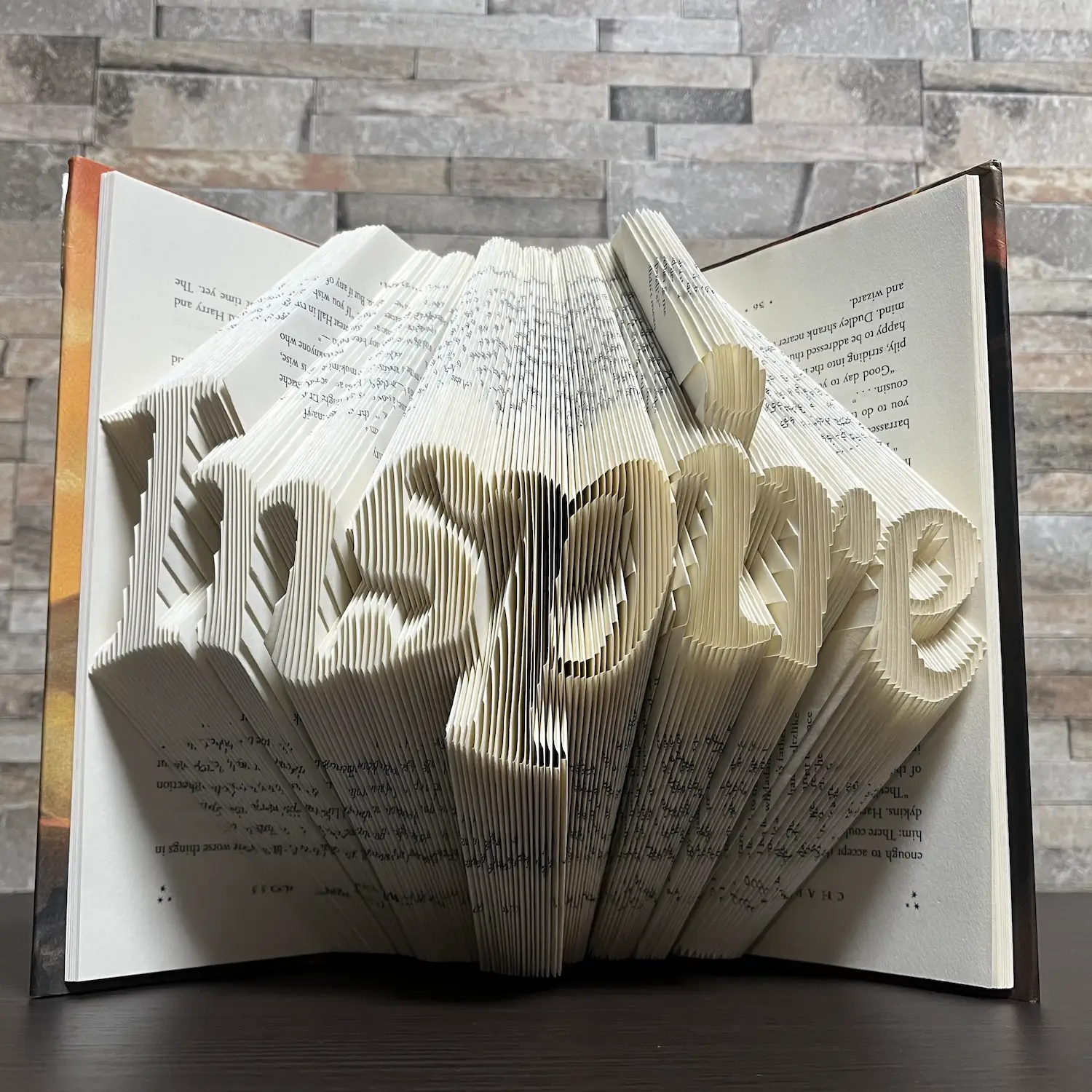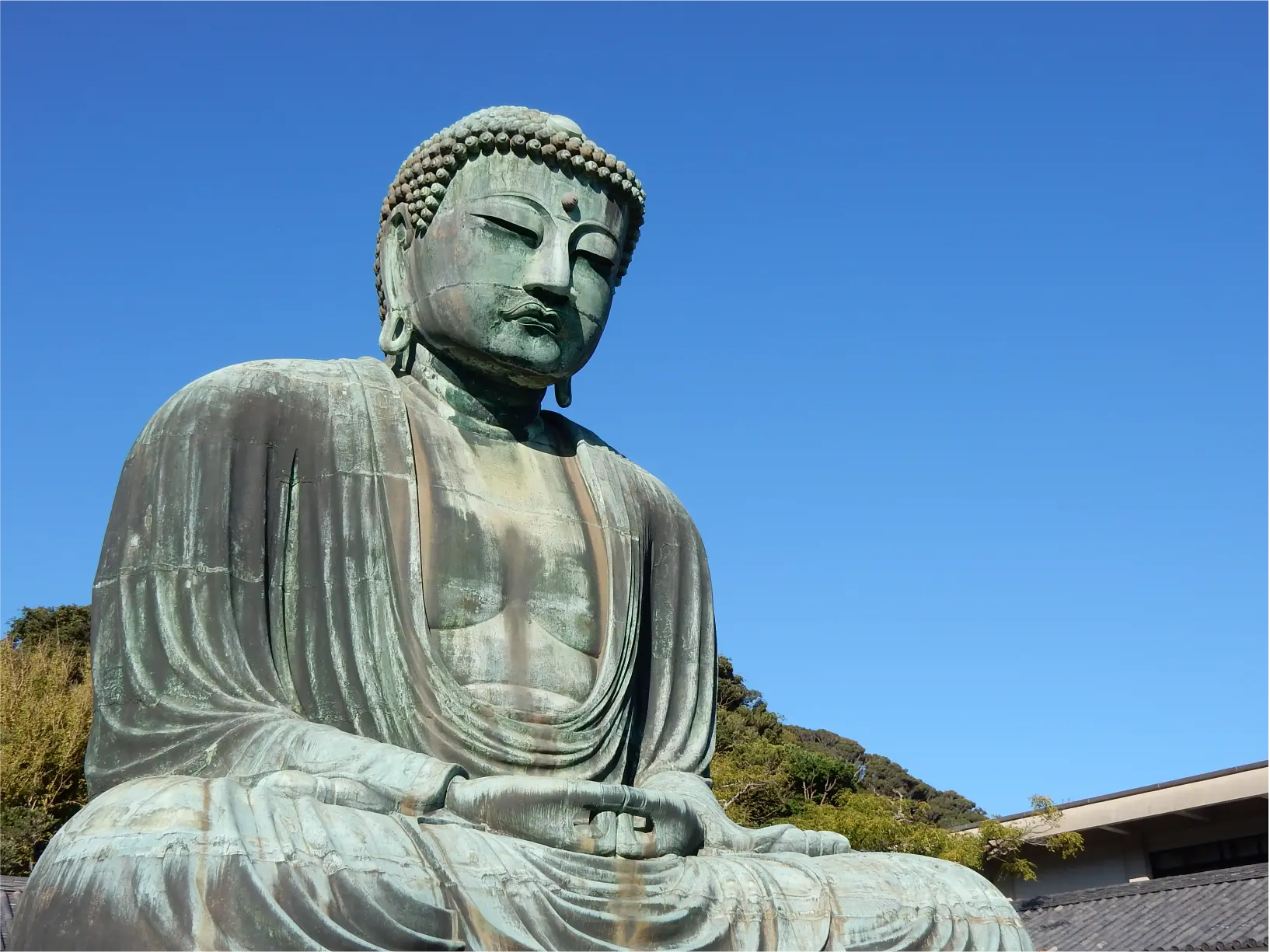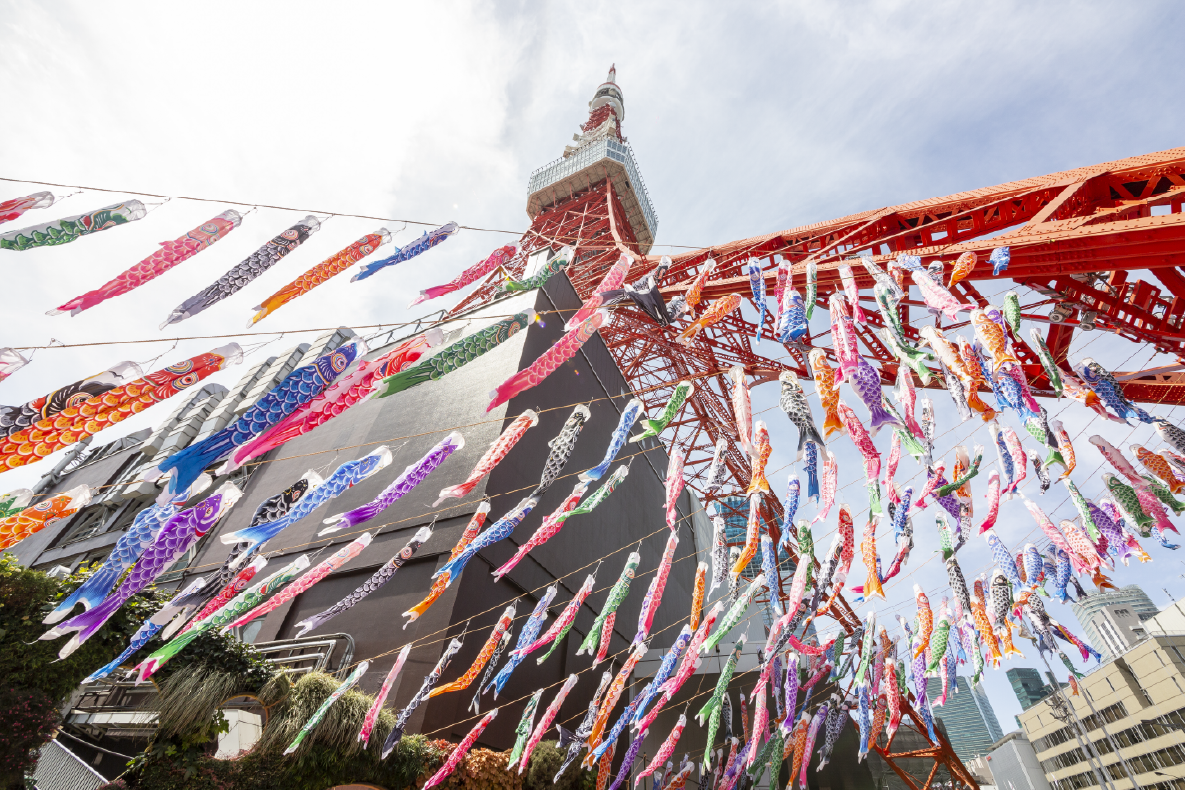Do you know Ukiyo-e, Japan’s unique traditional art with a rich history?
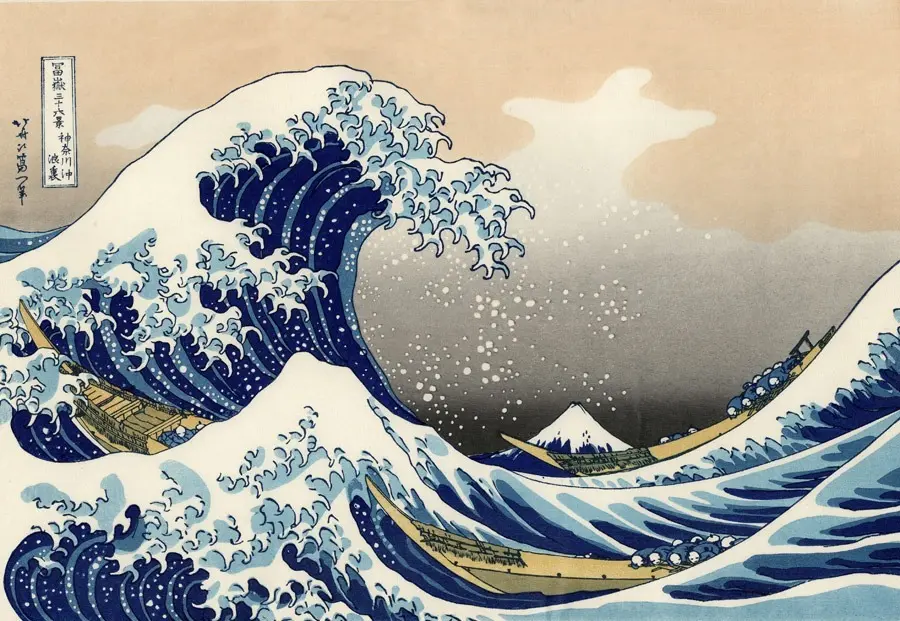
Ukiyo-e is a type of Japanese traditional art that has inspired world-renowned artists such as Monet and Van Gogh. You probably know what it looks like, but probably don’t know its history or what makes it so amazing. So, let’s learn a little bit about Ukiyo-e so that you can share the knowledge with your friends and family!
First, the basics of Ukiyo-e. Ukiyo-e is a type of Japanese traditional art originated during the Edo period. It mainly uses woodblock printing techniques, but it features not only a surprisingly delicate touch that you would never imagine that it had been designed by carving a piece of wood, but also vivid and beautiful colors. Due to the national seclusion policy during the Edo period, Ukiyo-e’s compositions, techniques, styles of expression, etc. evolved in a very unique way, later becoming a huge inspiration for famous artists in Europe as well as around the world.
The word “ukiyo” (written as “浮世” in Japanese kanji characters, and the first character “浮” means to fly or to float) was derived from the word “憂世,” which is also pronounced “ukiyo” and which means “sad world.” It is said that people began using “浮世,” a phonetic equivalent of “憂世,” as excitement and happiness began spreading throughout Japan and people began trying to enjoy the Edo period to the fullest after going through hard times ridden with countless wars.
It is said that Ukiyo-e was rooted in the lives of ordinary people, rather than being a lofty art, because Ukiyo-e prints were block prints, so they could be mass produced and were sold at affordable prices. They became an inseparable part of the entertainment of the Edo period, as they served many different purposes. Some were used as interior decorations or art pieces. Those depicting everyday life, scenery, travel destinations, etc. were used as something like magazines, and those depicting women or kabuki actors were used as something like portraits.
We also have to talk about unique Ukiyo-e artists. Katsushika Hokusai, who is known for his Thirty-six Views of Mount Fuji, created a wide variety of other works including monster prints, as well as Hokusai Manga, a picture tutorial book for those who want to learn his style of drawing. It is said that he was always searching after ways to improve and continued drawing until he reached almost 90 years of age, saying that all his works that he drew before 70 were insignificant. On a side note, it is said that Hokusai changed his name 30 times and moved his residence 90 times throughout his life and that he wasn’t good at tidying up, so he moved when his room got messy.

The Great Wave off Kanagawa—one of Katsushika Hokusai’s most famous prints from his Thirty-six Views of Mount Fuji The series of prints, which depicted Mt. Fuji in 46 different ways by capturing it from many different angles with ingenuity, made a tremendous hit at that time.
Utagawa Hiroshige, whose works are known for their distinctive deep blue color called “Hiroshige Blue,” created famous works depicting landscapes such as The Fifty-three Stations of the Tōkaidō and One Hundred Famous Views of Edo. With his striking compositions as well as his innovative ways of depicting things (drawing rain using straight lines, for example), he had a tremendous influence on many artists.
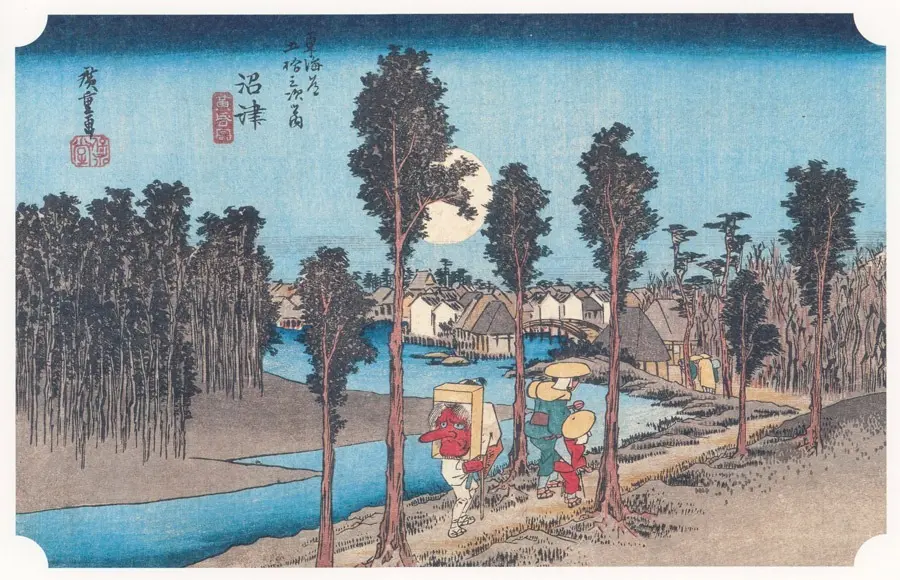
Twilight at Numazu from The Fifty-three Stations of the Tōkaidō by Utagawa Hiroshige This piece depicts a bhikkhunī and her attendants on their pilgrimage rushing to an inn in the Numazu area in Shizuoka Prefecture.
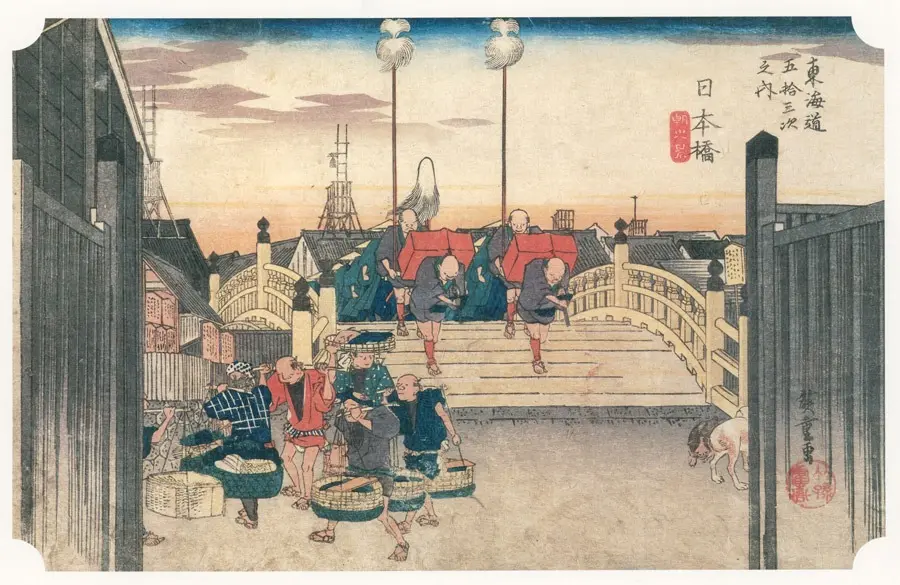
Another work from Utagawa Hiroshige—Morning View at Nihonbashi from The Fifty-three Stations of the Tōkaidō This piece depicts the morning view at the Nihonbashi bridge in Tokyo.
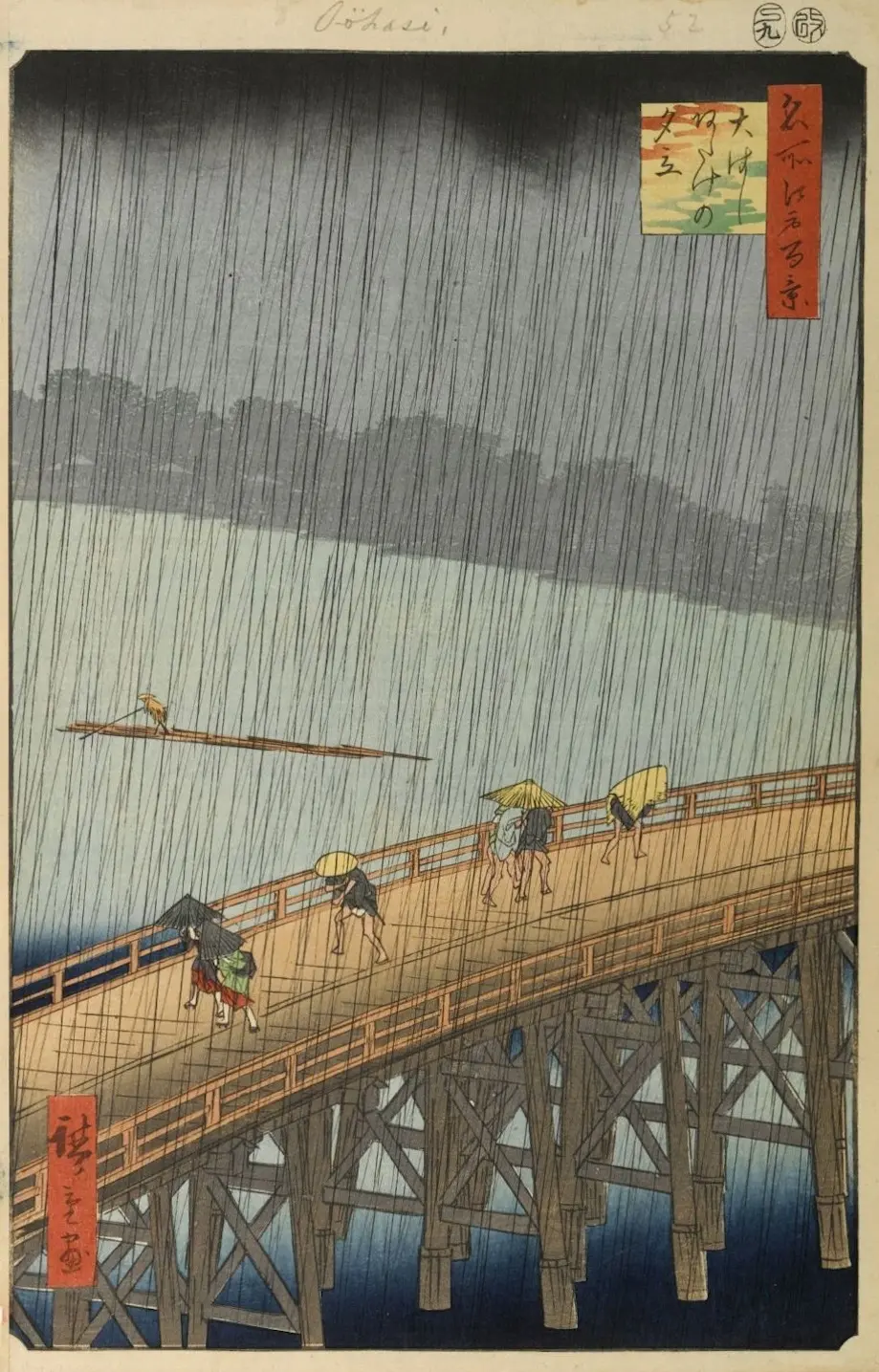
This is Utagawa Hiroshige's Sudden Shower over Shin Ohashi Bridge and Atake, in which rain clouds are depicted masterfully using a technique called “atenashi bokashi.” It is also famous as a work that later Van Gogh painted his own oil paint version of it.
Last but not least, we would like to introduce Tōshūsai Sharaku, a mysterious Ukiyo-e artist who suddenly disappeared after releasing 140 pieces of work in so short a time as ten months. He gained popularity mainly with his “Yakusha-e” prints that depicted popular Kabuki actors. Sharaku’s dynamic Yakusha-e prints have been highly acclaimed not only in Japan but also around the world, and are housed in locations such as The British Museum and The Metropolitan Museum of Art.
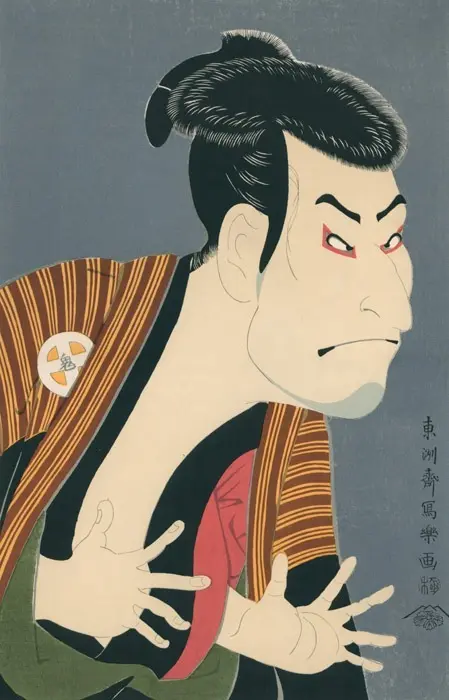
Kabuki Actor Ōtani Oniji III as Yakko Edobei by Tōshūsai Sharaku This piece depicts Edobei played by Kabuki actor Ōtani Oniji.
At Fa-So-La AKIHABARA, we have a variety of items, such as handkerchiefs and hand fans, with which you can casually enjoy the amazing world of Ukiyo-e. Why not take them home as a souvenir, together with the captivating aspects and history of Ukiyo-e that you learnt.
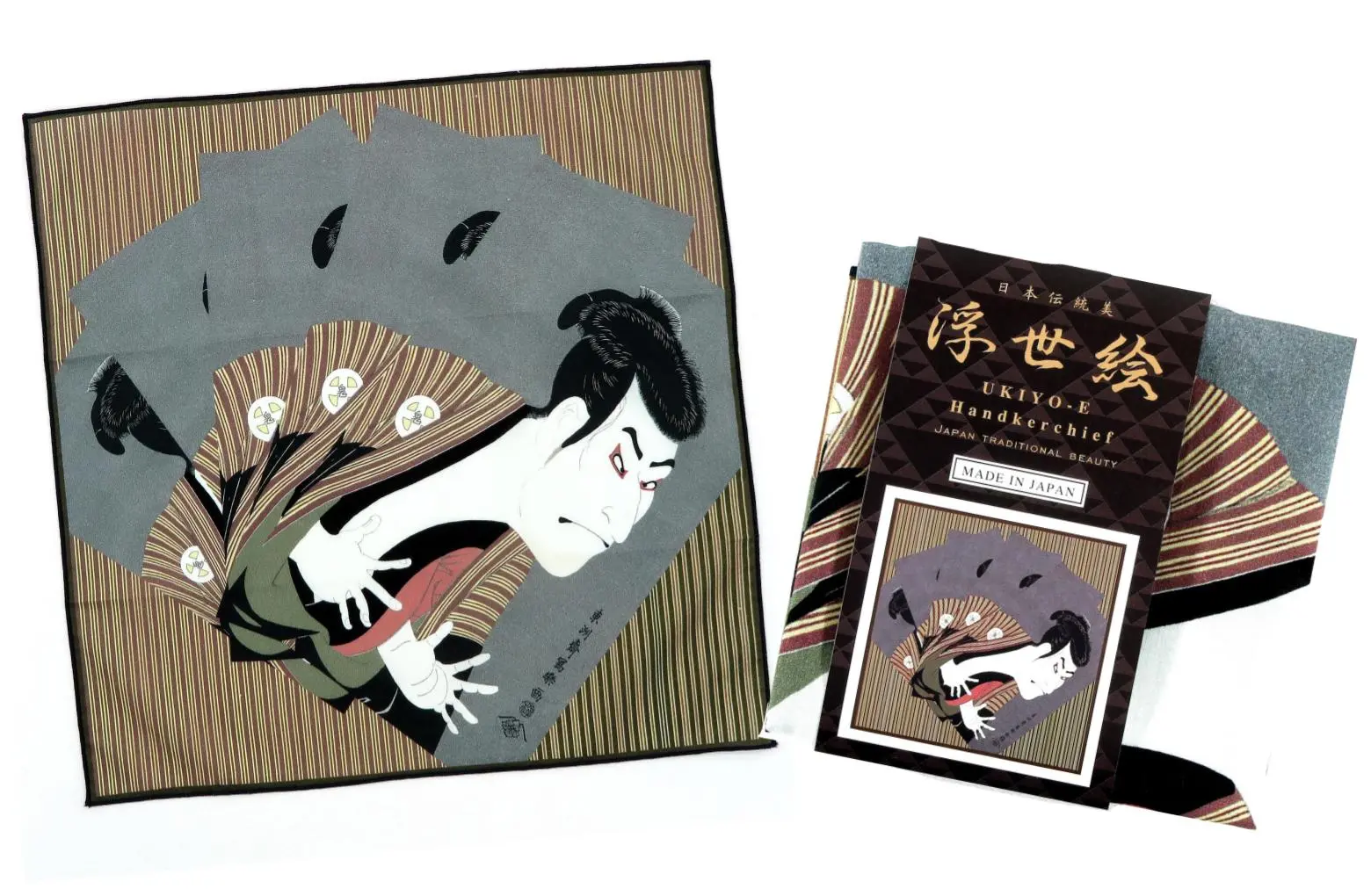
A print handkerchief made with 100% cotton, recreating even the dullness as realistic as that of the original print. Ukiyo-e handkerchief / Tax-free price ¥900 (Neography)
.webp)
A hand fan made with cedar. The backside is blank, so you can write a message. Wooden Ukiyo-e hand fan / Tax-free price ¥2980 (Neography)
(Information as of May 2023)

